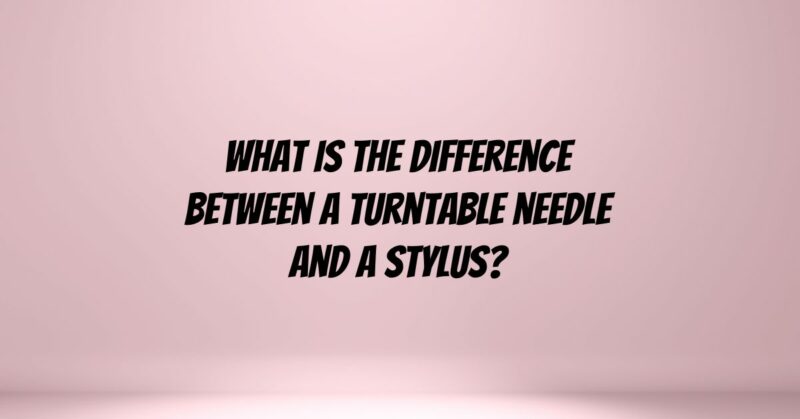When discussing turntables and vinyl playback, the terms “turntable needle” and “stylus” are often used interchangeably. However, there are subtle but crucial distinctions between the two. In this article, we’ll explore what sets a turntable needle apart from a stylus and why both components are essential for the proper functioning of a turntable.
- Stylus: The Heart of the Matter
The stylus, also known as the needle, is the primary component responsible for making contact with the grooves of a vinyl record. It plays a pivotal role in converting the physical movements within the grooves into electrical signals that can be amplified and reproduced as audio. The stylus typically consists of a small, needle-like structure that attaches to a cartridge.
Key Characteristics of a Stylus:
- Shape: Styluses come in various shapes, including spherical, elliptical, and microline. The shape of the stylus tip influences its ability to accurately trace the grooves and affect sound quality.
- Material: Stylus tips are usually made of materials such as diamond, sapphire, or other hard and durable substances. The choice of material can impact the stylus’s longevity and tracking ability.
- Cartridge: The Housing for the Stylus
The cartridge is the housing that holds the stylus and generates the electrical signals when the stylus moves along the grooves of a vinyl record. It is an integral part of the turntable’s tonearm and connects to the turntable’s wiring and phono preamp stage. The cartridge contains coils and magnets or other elements that produce the electrical output.
Key Characteristics of a Cartridge:
- Type: Cartridges are categorized into different types, such as moving magnet (MM), moving coil (MC), and ceramic cartridges. Each type has distinct characteristics that affect sound quality and compatibility with various turntable setups.
- Compatibility: Cartridges are designed to work with specific types of tonearms and turntables. The choice of cartridge and its compatibility with your turntable is crucial for optimal performance.
- Understanding the Relationship
The stylus and cartridge work in tandem, forming a critical partnership in the vinyl playback process. When you place a vinyl record on the turntable and start it spinning, the stylus is lowered onto the record’s surface. As the stylus moves along the grooves, it vibrates in response to the physical contours of the record, effectively translating these vibrations into electrical signals. These signals are then sent to the phono preamp and, subsequently, to your amplifier and speakers, where they are converted back into audible sound.
In essence, the stylus is the component directly responsible for reading the musical information stored in the grooves, while the cartridge’s internal components convert this mechanical movement into an electrical signal. Both the stylus and cartridge must be properly maintained and aligned for accurate tracking, optimal sound quality, and minimal record wear.
Conclusion
While the terms “turntable needle” and “stylus” are often used interchangeably, they refer to distinct components in the vinyl playback process. The stylus is the needle-like structure that makes physical contact with the record’s grooves, while the cartridge is the housing that contains the stylus and converts its movements into electrical signals. Understanding the roles of these components is essential for proper turntable setup, maintenance, and achieving the best possible audio quality when enjoying your vinyl record collection.


